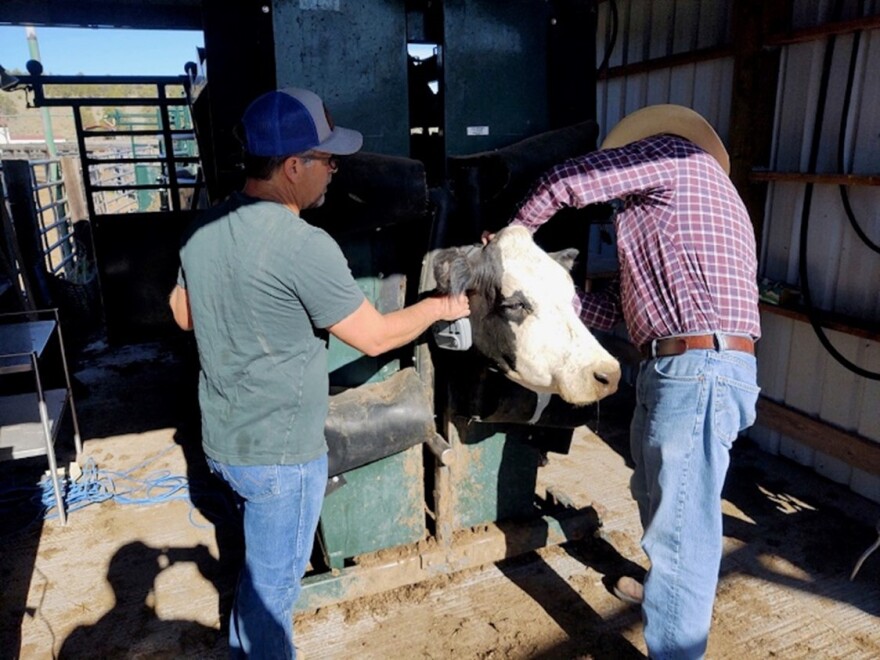Some ranchers say virtual fencing is revolutionizing the way they manage their livestock's grassland grazing.
Similar wireless fencing already exists for dogs, however, that technology typically requires a buried cable along the desired barrier. With industrial-scale virtual fencing, livestock wear collars that talk to a GPS tower.
Meanwhile, an operator uses computer software to draw virtual boundaries and move the GPS-located livestock around on a Google Earth-like map of their land.
Nick Jorgensen uses the technology on his team's 10,000-acre ranch near Ideal. He was part of a panel discussion at this year's Dakotafest in Mitchell. Jorgensen explained how the collars improve grazing practices.
"It talks to a radio base station up on a hill. And it sends a signal back and forth, and it gives the collar its direction. Says, 'hey this is as far as you can go,' as they get close it beeps at them, and then when they step into the fence zone, they get a light electrical pulse that encourages them to turn back around," Jorgensen said.
The USDA says animals quickly learn what the shocks mean, and soon respond to the audio beeps alone.
Overgrazing is difficult to control with traditional fences because pastures are defined by permanent fence boundaries, and moving a herd requires a lot of labor.
According to the South Dakota Callemen's Association, traditional fencing currently costs about $9,500 per mile when factoring in labor costs.

An operation near Sturgis that runs 1,200 cattle on 38,000 acres now uses the virtual fencing. Britton Blair, who helps run the operation, said the collars are preventing overgrazing on pastures in a more affordable and less labor-intensive way.
"It allows you to rotational graze without large infrastructure projects. It'll reduce labor. If you want to, you can pre-program all your moves," Blair said.
What's good for the grasslands is good for grassland wildlife, according to retired Game, Fish and Parks chief biologist George Vandel. He said keeping a healthy amount of grass on a pasture is vital for grouse, prairie chickens, insects, and other native prairie species.
The benefits of good grazing management go beyond soil health and habitat. Josh Zimmerman directs business development at Vence, a virtual fencing company. He said ranchers using the collars have better grassland management, letting them put more cattle on each acre of land.
"We're going to add 15%, on the low end, to your carrying capacity. On the same ground, without overgrazing, protecting your water, we can do that very efficiently. And that's kind of a new way for a ranch to look at expansion without huge capital purchases of, you know, buying more ground," Zimmerman said.
While the technology promises a lot, Zimmerman said virtual fencing has a way to go before ranchers rip out their fence lines.
"If a South Dakota ranch called me today and said, 'hey, we've got five miles of I-90 border fence that we want to take out,' we're gonna have a problem with that. That's not a use case we're looking to do," Zimmerman said. 'I do think this gives us the opportunity to eliminate as much as you can, if not all, interior fencing."
Zimmerman said a GPS tower covers about 15,000 acres of land and costs around $10,000. He said the collars annually cost about $35 each.


